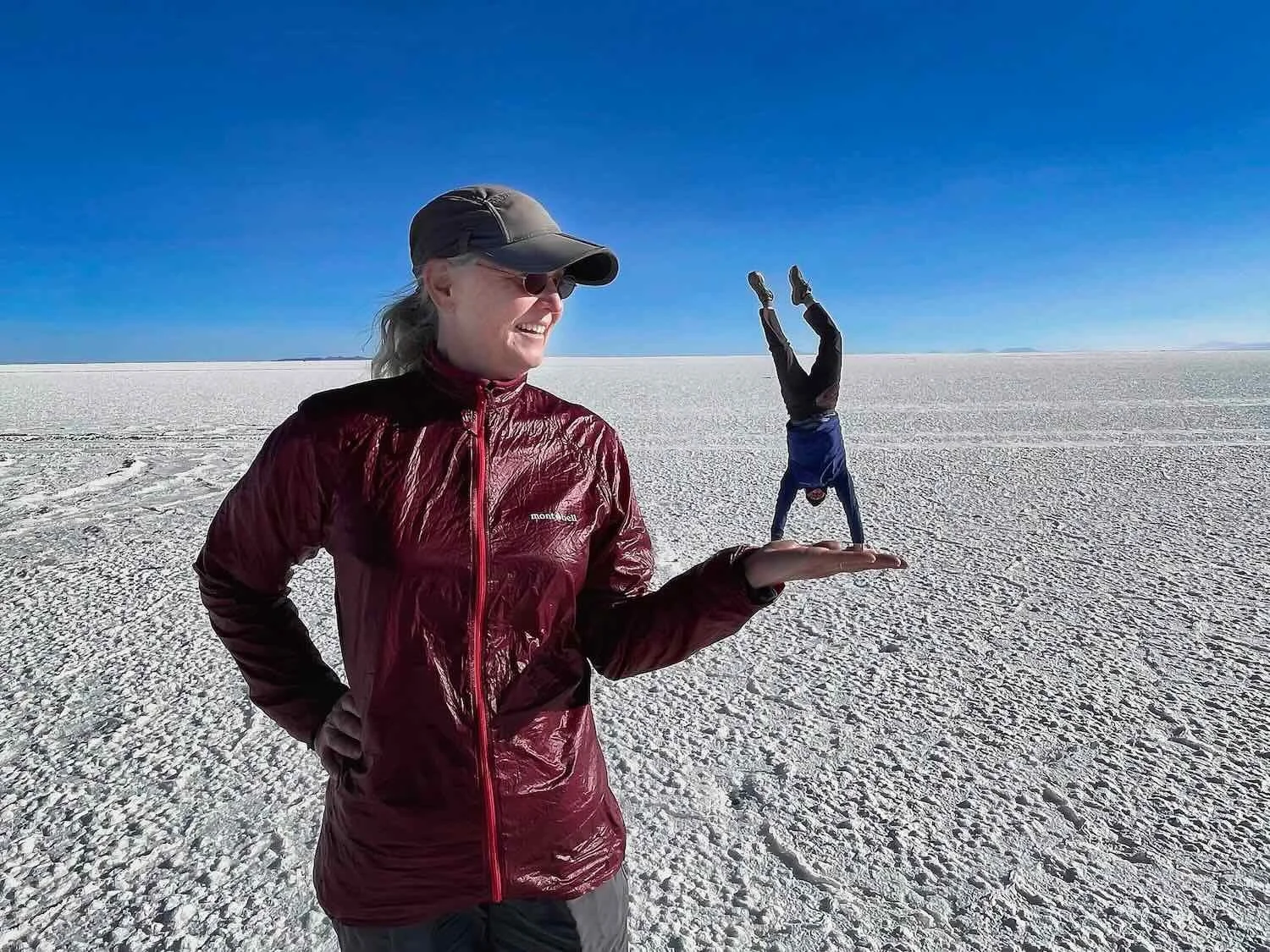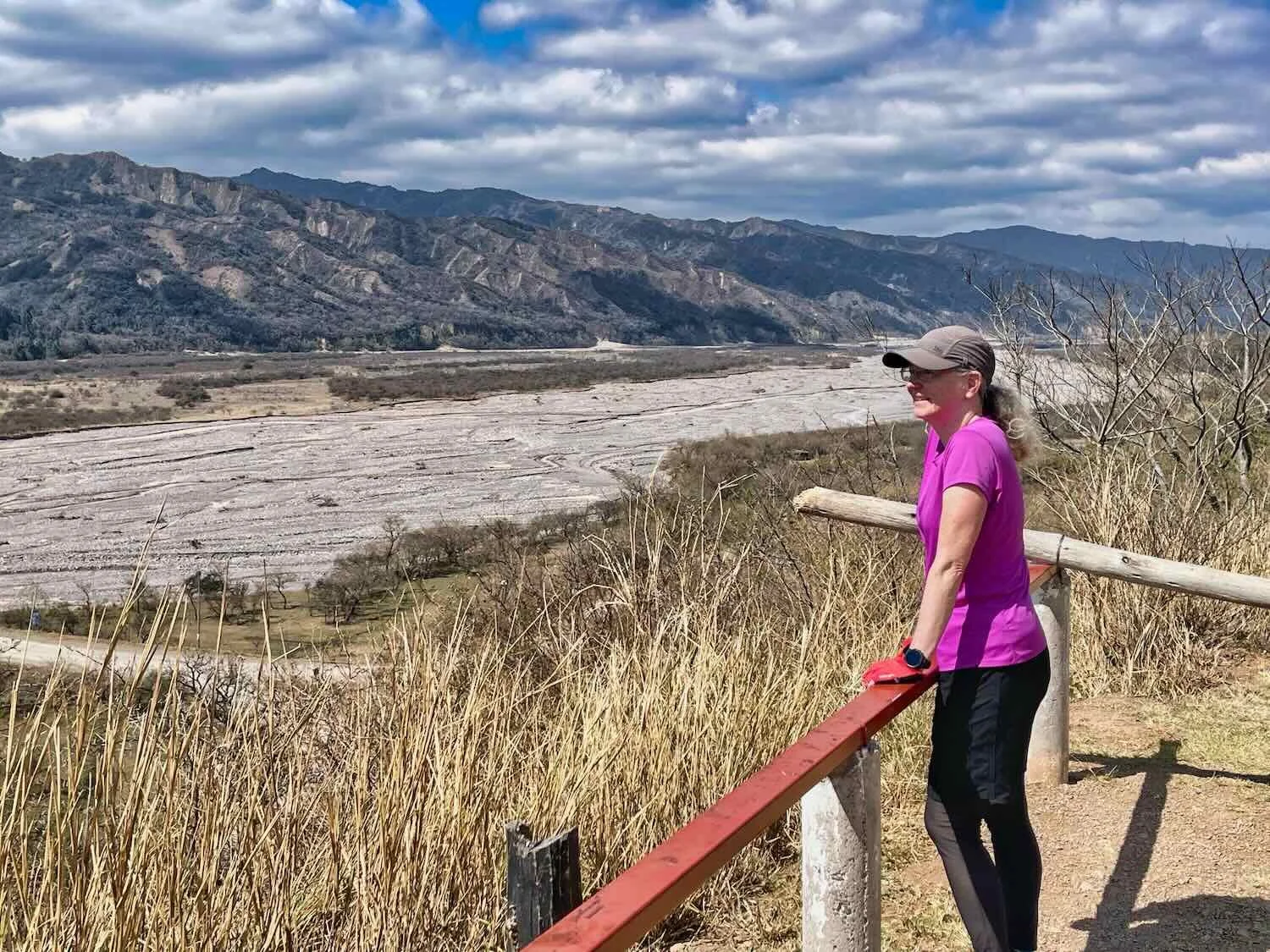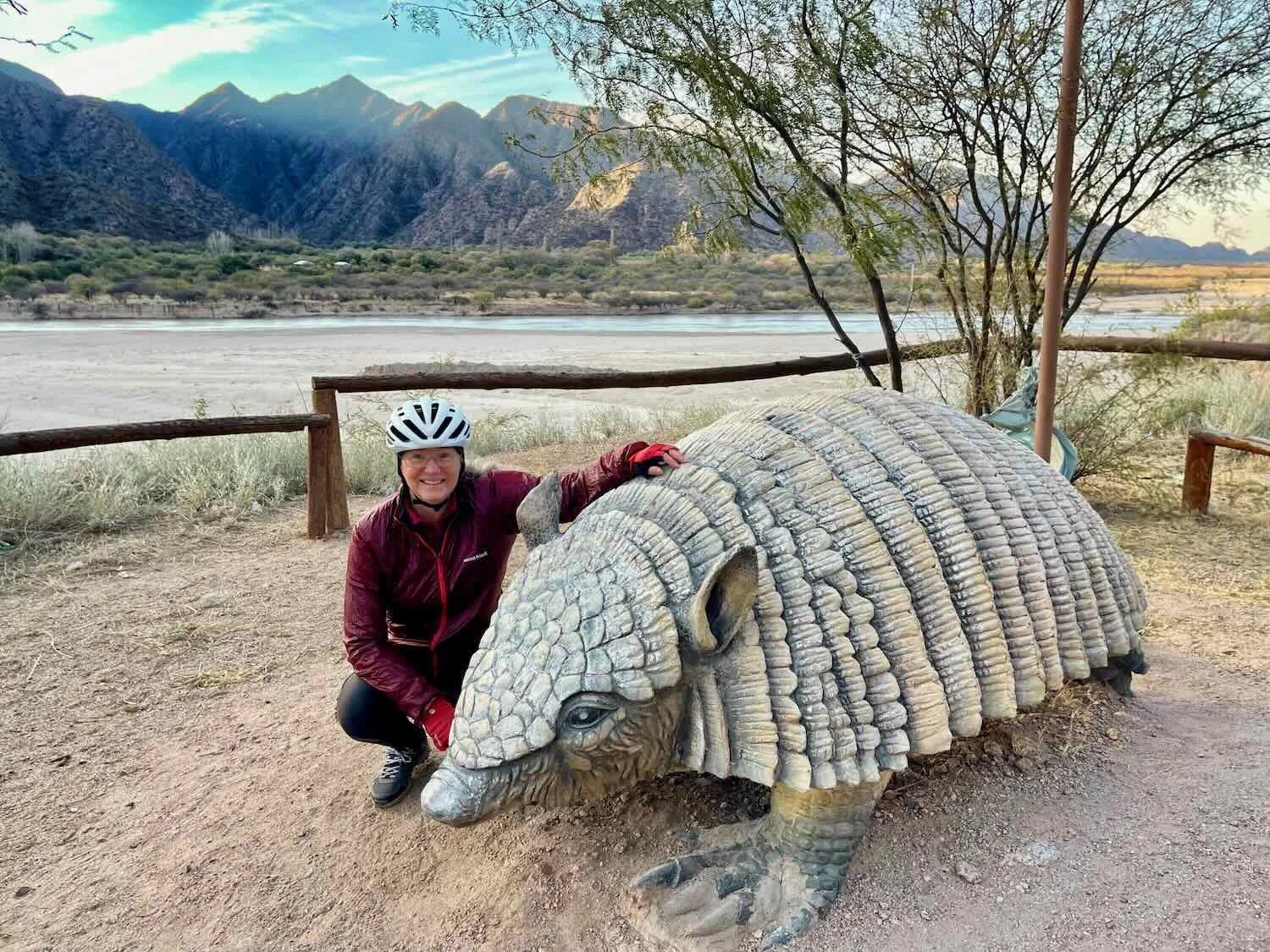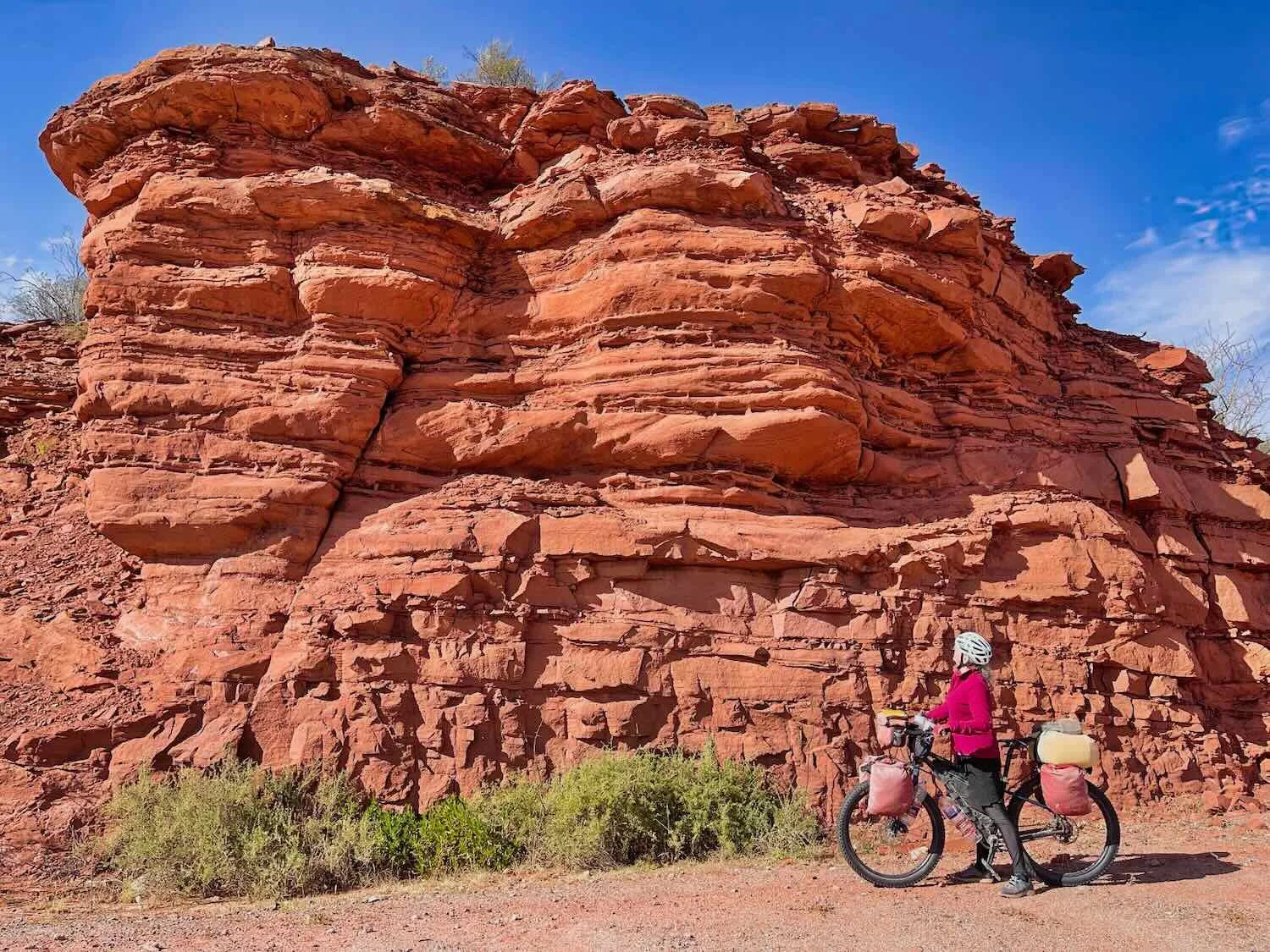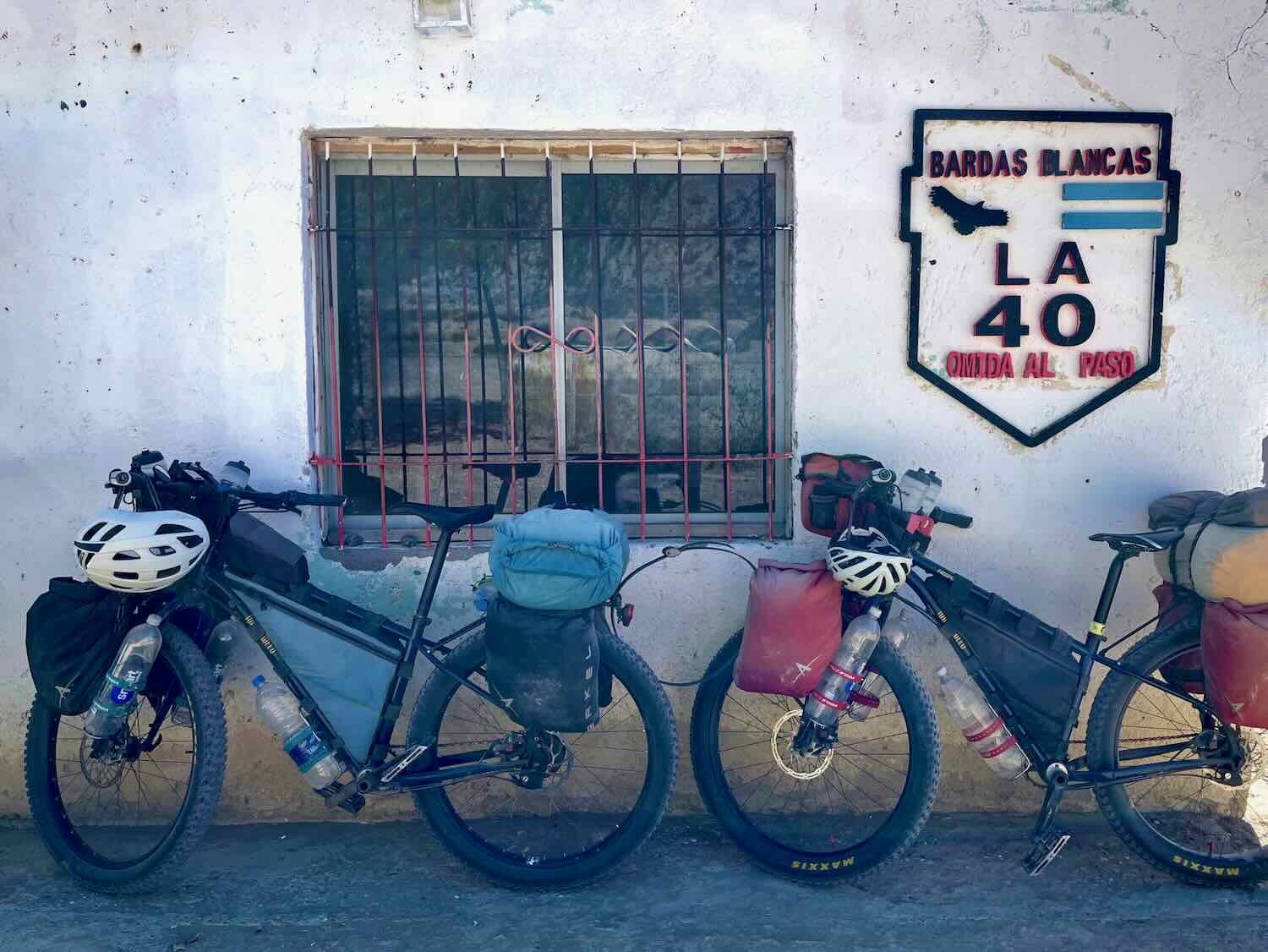Cycling Bolivia’s Altiplano, Part 2: Uyuni to La Paz
Cycling north out of Uyuni, Bolivia, we were surrounded by mostly-empty landscapes occupied by more vicuñas than people - where the wind whipped up towering sand storms that had us running for cover. As we got closer to La Paz, villages surrounded by dusty quinoa fields became much more frequent, and sheep replaced the vicuñas. Eventually we were able to immerse ourselves in the cultural kaleidoscope of La Paz - a heady mix of traditional mysticism and modern commerce - capped by a plunge by bicycle down the infamous Death Road.
Cycling Bolivia’s Altiplano, Part 1: Villazón to Uyuni
Following in the footsteps of ancient llama caravans, we cycled onto the lofty heights of Bolivia’s altiplano - a massive plateau soaring roughly 2.5 miles (4 km) above sea level. Along the way, the arid grasslands were interrupted by occasional mining settlements, llama farms, and high ridges that had us gasping in the thin air - until we arrived at the vast, white expanse of the Salar de Uyuni, the largest concentration of salt in the world.
Cycling Northern Argentina: Salta to La Quiaca
On the final leg of our cycling journey through Argentina, we climbed steadily away from the northern deserts to reach the lofty heights of the South American Altiplano - one of the largest, high-altitude plateaus in the world. Surrounded by rainbow-colored mountains, we followed an ancient trading route once traveled by Incan llama caravans. During six days of cycling, we would rise nearly 9,000 ft (2,750 m), stopping along the way to wait out windstorms and let our bodies acclimate to the increasingly thin air - eventually arriving at the border with Bolivia.
Cycling Argentina’s Route 40, Part 4: Chilecito to Salta
North of Chilecito, the landscape burst into a complex maze of ridges and high deserts. Cycling along ancient paths among the sierras, we followed Route 40 across arid valleys, over high, cold plateaus, and through narrow canyons lined with stunning rock formations. Tranquil desert camps alternated with humble, village hospedajes. Eventually we descended into greener lowlands, cycling into the historic and charming city of Salta.
Cycling Argentina’s Route 40, Part 3: Mendoza to Chilecito
As red canyon walls embraced us while cycling up a mountain pass, we continued to marvel at the diverse landscapes of Argentina’s legendary Route 40. The crowded highway just north of Mendoza had given way to a remote, high desert populated by tall, saguaro cacti, guanacos, and long-legged rodents five times the size of a rabbit. Gold, silver and copper lured prospective miners to isolated towns, where they built amazing feats of engineering to haul the ore out of the mountains. And in the lowlands, vineyards continued to attest to wine’s central place in the country’s economy and psyche.
Cycling Argentina’s Route 40, Part 2: Buta Ranquil to Mendoza
As we crested a hill a broad, brown valley stretched before us in the morning light, marking Patagonia’s northern boundary and the gateway to Argentina’s wine country. The river below symbolized a cultural shift, from the rugged gauchos of the southern frontier to the country’s fertile agricultural heartland. There was still plenty of wild country ahead, including a massive lava field and high deserts in the shadow of volcanos. But eventually we rolled into the more developed lowlands of Mendoza - draped with autumn-toned grapevines, nurtured by glacial meltwater flowing down from the highest mountain in the Western Hemisphere.
Cycling Argentina’s Route 40, Part 1: Junín de los Andes to Buta Ranquíl
As we pedaled toward the northern limit of Patagonia, the vast landscape continued to surprise and challenge us. Argentina’s celebrated Route 40 led us across treeless, windswept mesas and picturesque canyons where we pitched our tent far from the few, frontier towns. Along the way we shared the road with herds of goats being driven to new pastures for the winter. And in one small village we experienced a scene right out of Alfred Hitchcock’s movie The Birds. With a little help from some kind locals, we managed to keep moving forward - no matter how fiercely the winds blew.
Cycling the Pan-American Highway and Seven Lakes Route: Puerto Montt, Chile to Junín de los Andes, Argentina
After cycling the Carretera Austral, we chose to cross the Andes quickly, trading Chile’s rainforests for Argentina’s arid foothills. The Pan-American Highway took us along the edge of one of Chile’s largest lakes, with towering volcanos in the distance. The volcanos’ destructive power was evident as we cycled over a mountain pass lined with ghostly dead trees. We then traveled along the Seven Lakes Route, part of Route 40 - one of most fabled and scenic roads in Argentina.
Top 6 Observations on Cycling the Carretera Austral
After 40 days cycling through stunning Patagonian landscapes, we share our Top 6 insights from the Carretera Austral - one of the most famous “bucket-list” cycling routes in the world.
Cycling the Carretera Austral, Part 3: Puyuhuapi to Puerto Montt, Chile
Our cycling journey on the Carretera Austral ended where most people begin, in northern Patagonia. Riding among the glacier-topped mountains and tranquil river valleys, we were reminded of the landscape’s darker side - natural disasters that recently wreaked havoc on isolated towns. We enjoyed cozy cabins that offered refuge between rainforest camps within pristine national parks. While ferries helped us continue our journey whenever the road ended at the edge of a deep river or fjord. And along the way we crossed paths with other cyclists from around the world, gaining inspiration from their stories and dreams of future adventures.
Cycling the Carretera Austral, Part 2: Puerto Río Tranquilo to Puyuhuapi, Chile
As a steady downpour soaked us and our gear, we quickly learned a truth about the Carretera Austral - the western side of the southern Andes is all about rain. We rode through landscapes reflecting the abundance of water with shimmering lakes, rushing rivers, rainforest-covered hills, and thickets of moss, fuchsia flowers, and ferns. The terrain also was more demanding, as we cycled over three of the highest passes along the Carretera Austral. Along the way it was the many small pleasures, like a crackling fire, a pile of fresh, ripe cherries or a roadside meet-up with friends that created fond, lasting memories.
Cycling Patagonia: Punta Arenas to Caleta Tortél, Chile
As we sailed across the Strait of Magellan, we left Tierra del Fuego behind. But we still had a lot of Patagonia ahead of us. After a quiet Christmas in the City of Red Roofs, we cycled back onto the Patagonian pampas - encountering some of the hemisphere’s biggest birds, and fields bursting with the pinks, yellows and purples of flowers in bloom. Then three days on stormy seas among the fjords of southern Chile brought us to a tiny town in a steep-sided cove, with no regular streets or sidewalks. Instead there were five miles of boardwalks, and the main part of town lay at the top of 20 flights of wooden stairs.
Cycling Tierra del Fuego, Part 2: Río Grande, Argentina to Porvenir, Chile
As we cycled further north in Tierra del Fuego, we were enveloped by the treeless expanse of the pampas. Fields of grass that stretched to the horizon fed herds of sheep and smaller bands of guanacos. But the serenity of the vistas stood in sharp contrast to the weather, which buffeted us with strong winds that made bike handling a challenge and slowed our progress to a crawl. After a couple of tough days, we made it to the border and crossed into Chile. There, our hopes for a rest day were dashed by a terrible weather forecast - forcing an overnight cycling marathon to outrun the storm. Our reward, at the end, was a rendezvous with royalty at the King Penguin Nature Reserve.
Cycling Tierra del Fuego, Part 1: Ushuaia to Río Grande, Argentina
The Pan-American Highway ends in the south where it reaches the ocean in the city of Ushuaia. But even though Ushuaia is known as The End of the World, it served as a beginning for us. From there, we resumed our Alaska-to-Patagonia bicycle journey, heading back north towards Colombia. After a visit with some penguins, we were back on our bicycles, cycling over the snowy, southern Andes and across the Patagonian steppe. Blown by the wind and drenched by rain, we found shelter where we could - among stunted, gnarly trees and even in the basement of a bakery - eventually arriving in the industrial center of Tierra del Fuego.
Exploring Buenos Aires, The Paris of the South
Buenos Aires… the land of red wine, juicy steaks, and tango evokes dreams of romance and style. So when our bicycle tour across the Americas was interrupted in Colombia due to an accident, we decided that this alluring metropolis would be the perfect place for a layover to recover. This blog post summarizes our time in Buenos Aires before restarting our bicycle trip.
Cycling Colombia Part 5: Neiva to Bruselas… to Pitalito
We continued cycling southwards, away from the bigger Colombian cities of the north. With each passing mile, the landscape around us became more rural. Gradually we ascended onto higher ridges, with gorgeous views of the Magdalena River below. Small towns, off the beaten tourist path, rewarded us with tales of witches, brave heroines, celebrations of freedom, and holy blessings for travelers. But just after we cycled over the highest mountain ridge, disaster struck - requiring us to rethink all of our plans.
Cycling Colombia Part 4: Ibagué to Neiva
It was time for us to leave the high mountains, at least for a little while. A rapid descent from the Central Andean Ridge landed us in the fertile Magdalena Valley. Over the next week we cycled through Colombia’s heartland, bordered by the distant, blue-gray ridges of the Andes that rise nearly three miles into the sky. We crossed a wide, rushing river to reach Colombia’s largest inland desert, where we lost ourselves among strange, ghostly shapes. Then a final, quiet bike ride through the countryside brought us back to the shores of the fabled Magdalena River, among monuments to some the region’s strange, mythical inhabitants.
Cycling Colombia Part 3: Medellín to Ibagué
We departed Medellín in the company of a couple of hundred other cyclists, all climbing a big mountain on a Sunday just for fun. The descent brought us into Colombia’s coffee heartland, but we still had to cycle up and over the Central Andes. We climbed up to a picturesque mountain town, and then over the 11,083 ft (3,378 m) Alto de La Línea pass - one of the highest in the country - where forests of wax palms (Colombia’s national tree) grow among the clouds. From there we dropped back down to the Music Capital of Colombia, and spent a couple of weeks enjoying the Colombian National Folk Festival, where groups from all over the country come to celebrate their cultural heritage.
Cycling Colombia Part 2: Caucasia to Medellín
Our ascent into the Andes Mountains began gently, as we cycled upstream along one of Colombia’s biggest rivers. But soon enough we were climbing out of the valley, and discovered just how formidable the Andes can be. After several days of cycling through a deep canyon flowing with waterfalls, forests shrouded in clouds, and high mountain pastures, we had gained 9,000 ft (2,745 m) in elevation. From there we plunged into Medellín in a single, long and grueling day - where a rest in The City of Eternal Spring rejuvenated us for the road ahead.
Cycling Colombia Part 1: Cartagena to Caucasia
We had arrived at the Darien Gap in Panama, where all roads end - requiring travel by air or water to reach Colombia. Our ‘quick, 1-hour flight’ from Panama to Colombia took 19 hours longer than expected, but at least our bicycles survived unscathed. Eventually we arrived in the historic, walled city of Cartagena. From there we cycled across a broad plain whose culture reminded us more of the Caribbean than South America. Airy buildings with thatched roofs lined chocolate-brown waterways and seaside beaches, with vast expanses of green savanna in between. Soaked in sweat from the heat and humidity, we looked forward to the higher elevations and cooler temperatures of the Andes Mountains which lay in our path to the south.

